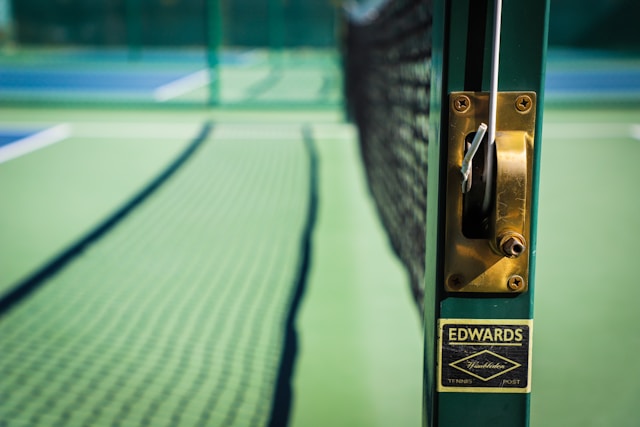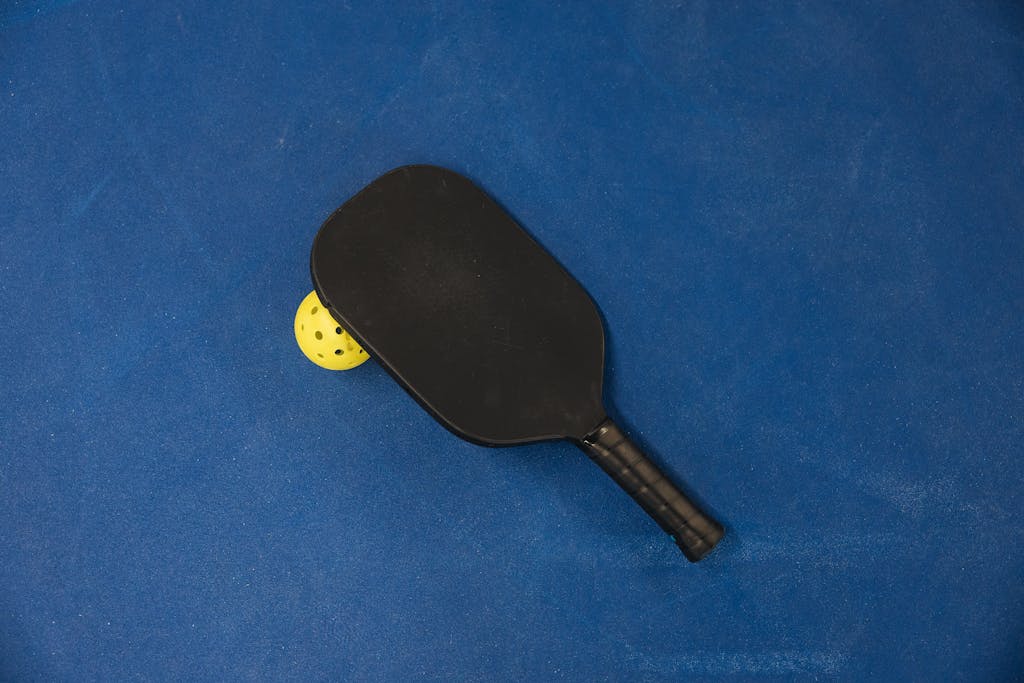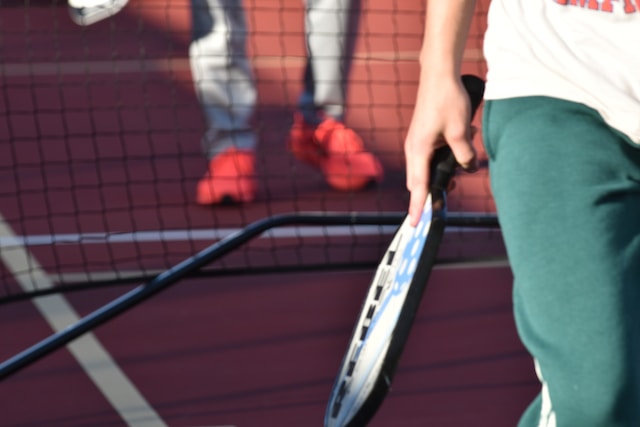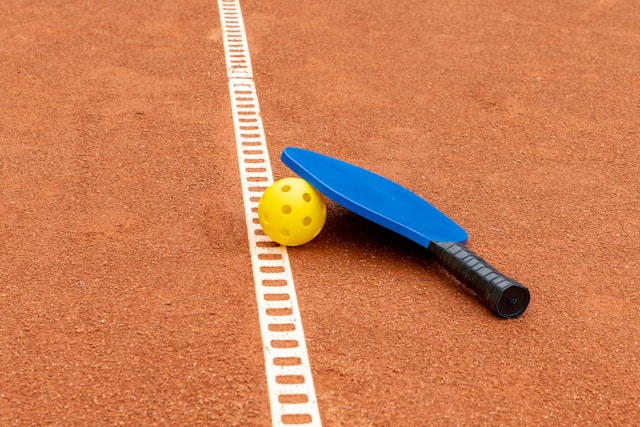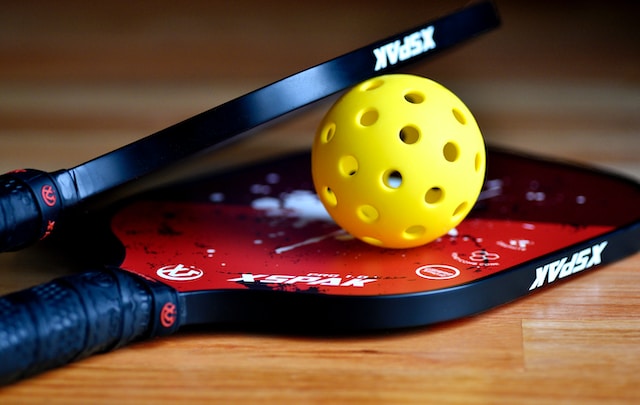Best Lightweight Pickleball Paddles: Top Picks for Easy Maneuvering on the Court
There are some affiliate links below, but they are all products I highly recommend. For more info, view my disclosure here.
Looking for the best lightweight pickleball paddle can be a daunting task, especially if you’re new to the sport. With so many options available on the market, it’s easy to get overwhelmed and confused about which paddle to choose. However, finding the right paddle is crucial to your game, as it can greatly affect your performance on the court. We’ll introduce you to the best lightweight pickleball paddles on the market and help you make an informed decision.
When it comes to pickleball paddles, weight is an important factor to consider. A lighter paddle can help you maneuver the ball with more ease and speed, which is essential for players who want to improve their game. However, it’s important to find a paddle that is not too light, as this can affect your control and power. The best lightweight pickleball paddles strike a balance between weight, control, and power, giving you the best of both worlds.
We’ll review some of the best lightweight pickleball paddles on the market, taking into account their weight, materials, design, and performance. Whether you’re a beginner or an experienced player, we’ve got you covered. Let’s dive in and find the perfect paddle for you!
Understanding Pickleball Paddles
When it comes to pickleball, the paddle is an essential piece of equipment. The right paddle can make all the difference in your game, and choosing the right one can be overwhelming. Understanding the materials and design of pickleball paddles and how they impact your game can help you make an informed decision.
Materials and Design
Pickleball paddles are made of various materials, including wood, graphite, composite, and carbon fiber. Each material has its own unique characteristics that affect the paddle’s performance.
Wooden paddles are the most traditional type of pickleball paddle. They are often the least expensive and are ideal for beginners. However, they are also the heaviest and least durable of all the paddle materials.
Graphite paddles are lightweight and have a soft touch. They are also known for their durability and are a popular choice among advanced players.
Composite paddles are made of a combination of materials, such as fiberglass and polymer core. They are known for their versatility and are suitable for players of all levels.
Carbon fiber paddles are the most expensive and are known for their power and control. They are also the lightest of all the paddle materials.
The design of the paddle also plays a significant role in its performance. The surface of the paddle can be smooth or textured, and the core can be solid or perforated. A textured surface can give you more spin and control, while a smooth surface can give you more power. A perforated core can reduce the weight of the paddle, making it easier to maneuver.
Paddle Weight and Its Impact
The weight of the paddle is another critical factor to consider when choosing a pickleball paddle. A heavier paddle can give you more power, but it can also be more challenging to maneuver. A lighter paddle can give you more control, but it may not have as much power.
Lightweight paddles are becoming increasingly popular among pickleball players. They are easier to maneuver and can reduce the risk of injury. However, it’s essential to find a balance between weight and performance.
Understanding the materials and design of pickleball paddles and how they impact your game can help you choose the best pickleball paddle for your needs. Consider your skill level, playing style, and personal preferences when making your decision.
Selecting the Right Weight
When it comes to purchasing a pickleball paddle, selecting the right weight is a crucial decision. The weight of the paddle can affect your gameplay and overall experience. Here are some factors to consider when selecting the right weight for your paddle.
Light vs Heavy Paddles
One of the first decisions you’ll need to make is whether you want a lighter or heavier paddle. Lighter paddles are typically easier to maneuver and offer better control. They are also less tiring to use for extended periods of time. On the other hand, heavier paddles can provide more power and are generally more durable. They can also be more comfortable for players who prefer a heavier feel.
Balance and Feel
The balance and feel of a paddle can also be influenced by its weight. A lighter paddle may have a more head-heavy balance, which can provide more power but less control. A heavier paddle may have a more handle-heavy balance, which can offer better control but less power. It’s important to find a paddle with a balance and feel that suits your playing style and preferences.
When selecting a paddle weight, keep in mind that there is no one-size-fits-all solution. It’s important to try out different weights and find the one that feels most comfortable and effective for you. Don’t be afraid to experiment with different weights and see how they affect your gameplay. Ultimately, the right weight for your paddle will depend on your individual needs and preferences.
Evaluating Paddle Surfaces
When looking for a lightweight pickleball paddle, one of the most important factors to consider is the surface of the paddle. Here, we’ll evaluate the different paddle surfaces and their impact on ball control.
Textured vs Smooth
Paddle surfaces can be either textured or smooth, and each has its own advantages. Textured surfaces provide more grip and control, making it easier to put spin on the ball. Smooth surfaces, on the other hand, allow for a faster swing and more power behind your shots.
If you’re looking for a paddle that will give you greater control over your shots, a textured surface may be the way to go. However, if you’re more concerned with speed and power, a smooth surface may be a better choice.
Impact on Ball Control
The surface of your paddle can have a significant impact on your ability to control the ball. A fiberglass face, for example, provides a good balance of power and control. A graphite face, on the other hand, is better for players who prioritize control over power.
Carbon fiber faces are also becoming increasingly popular, as they offer a good balance of power, control, and durability. However, they can be more expensive than other types of surfaces.
Ultimately, the surface of your paddle will come down to personal preference and playing style. Consider your priorities, whether it be power, control, or a balance of both, and choose a surface that complements your game.
Core Construction
When it comes to selecting the best lightweight pickleball paddle, the core construction is a crucial factor to consider. The core of a paddle determines its weight, durability, and feel. Two common types of core construction are honeycomb cores and solid cores.
Honeycomb Cores
Paddles with honeycomb cores are popular among players who prefer a lightweight paddle. The honeycomb core is made of polypropylene material, which makes it lighter than solid cores. The honeycomb structure also makes the core more absorbent, reducing the impact of the ball on the paddle. This results in a more comfortable feel and better control over the ball.
Solid Cores
Solid core paddles are known for their durability and power. The thicker core provides more stability and power, making it easier to hit the ball harder. Solid core paddles are also more durable than honeycomb core paddles, and they can withstand more wear and tear.
When selecting a lightweight pickleball paddle, it’s important to consider your playing style and preferences. If you prefer a paddle with a great feel and control, a honeycomb core paddle might be the right choice for you. On the other hand, if you want a durable paddle that can withstand heavy use, a solid core paddle might be the better option.
The core construction of a pickleball paddle is an essential factor to consider when selecting a lightweight paddle. Whether you choose a honeycomb core or solid core paddle, make sure to select a durable paddle that provides a great feel and control over the ball.
Paddle Shapes and Sizes
When it comes to choosing a pickleball paddle, the shape and size of the paddle can significantly affect your gameplay. In this section, we will discuss two common paddle shapes: wide body paddles and elongated and slim designs.
Wide Body Paddles
Wide body paddles have a larger sweet spot, which provides more surface area to hit the ball. This makes them an excellent choice for beginners or players who want more forgiveness on their shots. The wider shape also makes it easier to hit volleys and return serves.
One potential downside to wide body paddles is that they can be heavier than other paddle shapes. However, many manufacturers now offer lightweight options, so this may not be an issue for all players.
Elongated and Slim Designs
Elongated and slim designs are becoming increasingly popular among pickleball players. These paddles have a longer handle and an elongated shape, which provides a larger sweet spot and more reach. This makes them an excellent choice for players who want more control over their shots and the ability to hit the ball with more power.
Slim designs, on the other hand, are ideal for players who want a lighter paddle that is easy to maneuver. These paddles are typically narrower than other shapes, making them easier to swing and control.
When choosing a paddle shape, it’s essential to consider your playing style and skill level. Players who are just starting may prefer a wider paddle, while more experienced players may prefer an elongated or slim design for increased control and power.
Grip Considerations
When it comes to selecting a lightweight pickleball paddle, grip considerations are crucial. A comfortable grip that fits your hand size and provides a better grip can make a significant difference in your gameplay. Here are some factors to consider when choosing a grip for your lightweight pickleball paddle.
Grip Size and Texture
The grip size of your paddle is an essential factor to consider. A grip that is too small or too large can cause discomfort and affect your gameplay. A comfortable grip size allows you to hold the paddle correctly and maneuver it with ease. Most lightweight pickleball paddles come with a standard grip size of 4 inches in circumference. However, some paddles offer a smaller or larger grip size to cater to different hand sizes.
Another essential factor to consider is grip texture. A grip with a rougher texture provides a better grip and prevents the paddle from slipping out of your hand during gameplay. A smoother texture may not offer the same level of grip, but it can provide a more comfortable feel.
Grip for Different Hand Sizes
If you have smaller hands, choosing a paddle with a smaller grip size can help improve your gameplay. A smaller grip allows you to hold the paddle more comfortably and maneuver it with ease. On the other hand, if you have larger hands, choosing a paddle with a larger grip size can help you maintain a better grip on the paddle.
Selecting the right grip for your lightweight pickleball paddle is crucial. A comfortable grip size and texture can significantly impact your gameplay and prevent discomfort during extended gameplay. Consider your hand size and grip preferences when selecting a paddle to ensure a better experience on the court.
Paddle Features for Skill Levels
When looking for a new pickleball paddle, it’s important to consider your skill level. The right paddle can make a big difference in your game, and different features are better suited to different skill levels.
Beginners
If you’re new to pickleball, you’ll want a paddle that is forgiving and easy to use. Look for a paddle with a larger sweet spot, which will help you hit the ball more consistently. A lighter weight paddle is also a good choice, as it will be easier to maneuver and won’t tire you out as quickly.
Another important feature to consider is the grip size. A smaller grip may be more comfortable for players with smaller hands, while a larger grip may be more comfortable for players with larger hands. Try out different grip sizes to find the one that feels most comfortable for you.
Intermediate and Advanced Players
As you gain more experience and skill in pickleball, you may want to consider a paddle with more advanced features. A heavier paddle can provide more power and control, but may also tire you out more quickly. Look for a paddle with a balanced weight that feels comfortable for you.
Another feature to consider is the paddle’s shape. A wider paddle may provide more surface area for hitting the ball, while a narrower paddle may be more aerodynamic and easier to maneuver. The shape of the paddle can also affect the amount of spin you can put on the ball.
Consider the materials used in the paddle’s construction. More advanced players may prefer a paddle made of carbon fiber or other high-tech materials, while beginners may be just fine with a paddle made of wood or composite materials.
Overall, choosing the right paddle for your skill level can make a big difference in your game. Consider all of the features mentioned above, and try out different paddles to find the one that feels best for you.
Paddle Performance in Play
When it comes to lightweight pickleball paddles, you want to make sure that your paddle performs well during play. Here are some factors to consider:
Control vs Power
One of the most important factors to consider is the balance between control and power. If you’re a player who likes to play with finesse and control, you’ll want a paddle that has a softer touch and more control. On the other hand, if you’re a player who likes to hit the ball hard and fast, you’ll want a paddle that has more power and less control.
Maneuverability
Another important factor to consider is maneuverability. A lightweight paddle will allow you to move quickly and easily around the court, which can be especially important in tournament play. A paddle with better maneuverability can help you adjust your shots and adapt to your opponent’s playing style.
Overall, the performance of your lightweight pickleball paddle will depend on your playing style and the type of play you prefer. Whether you prioritize control or power, or prefer a paddle that is highly maneuverable, there are plenty of options available to suit your needs.
Top Lightweight Pickleball Paddles
If you’re in the market for a new pickleball paddle and want something lightweight, you’re in luck. There are plenty of great options available that won’t weigh you down on the court. Here are some of the best lightweight pickleball paddles on the market.
Premium Picks
- Selkirk AMPED S2 X5 FiberFlex Pickleball Paddle – This is a great option for those looking for a top-of-the-line lightweight paddle. It’s made with a FiberFlex face and a polymer core, making it both durable and responsive. It’s also designed with a longer handle for added reach and control.
- Paddletek Phoenix Genesis Pro Pickleball Paddle – This paddle is an excellent choice for players who want a lightweight option with a large sweet spot. It’s made with a carbon fiber face and a polymer core, providing both power and control. It also features a comfortable grip for extended play.
Budget-Friendly Options
- Onix Graphite Z5 Pickleball Paddle – If you’re looking for a good choice that won’t break the bank, the Onix Graphite Z5 is a great value. It’s made with a graphite face and a Nomex honeycomb core, providing a good balance of power and control. It also has a comfortable grip and a large sweet spot.
- Gamma Sports Photon Indoor Pickleball Paddle – This is a more affordable option that still offers good performance. It’s made with a fiberglass face and a polymer core, providing a lightweight and responsive feel. It also has a comfortable grip and a good balance of power and control.
Overall, there are plenty of great lightweight pickleball paddles to choose from. Whether you’re looking for a premium option or a budget-friendly choice, there’s something out there for everyone. Just remember to choose a paddle that feels comfortable in your hand and suits your playing style.
Choosing Your Ideal Paddle
When it comes to pickleball, choosing the right paddle is crucial. It can make all the difference in your performance on the court. Here are some factors to consider when choosing your ideal paddle.
Personal Preference
Your personal preference plays a big role in choosing the right pickleball paddle. Some players prefer a heavier paddle for more power, while others prefer a lighter paddle for more control. Grip size is also important, as a comfortable grip can prevent hand fatigue during long games. Try out different paddles to see what feels best for you.
Playing Style and Experience
Your playing style and experience level should also be taken into account when choosing a pickleball paddle. New players may want to start with a lighter paddle to focus on control and technique. Experienced players may want a heavier paddle for more power and speed. If you prefer a more aggressive playing style, a paddle with a larger sweet spot may be ideal.
It’s important to remember that there is no one perfect paddle for everyone. The ideal choice depends on your personal preferences and playing style. Take the time to research and try out different paddles to find the right one for you and your game.
Maintaining Your Pickleball Paddle
As a pickleball player, you know that your paddle is a crucial part of your game. It is essential to maintain your paddle to ensure that it lasts a long time and remains durable. Here are some tips on how to maintain your pickleball paddle.
Longevity and Durability
Investing in a high-quality pickleball paddle is the first step towards ensuring its longevity. A high-quality paddle will last longer than a low-quality one. Therefore, it is essential to choose a paddle made of high-quality materials.
Another way to ensure the longevity of your paddle is by avoiding exposing it to extreme temperatures. Direct sunlight, for instance, can cause the paddle to warp or crack. You should also avoid leaving your paddle in a hot car or a cold garage.
Care and Storage
Proper care and storage of your pickleball paddle are crucial to its durability. After each game, you should wipe your paddle with a damp cloth to remove any dirt or sweat. You can also use a paddle cleaner to remove any stubborn dirt or stains.
When not in use, store your paddle in a protective cover or case. This will protect it from scratches and other damage. You should also avoid stacking your paddles on top of each other, as this can cause them to warp or crack.
Maintaining your pickleball paddle is crucial to its longevity and durability. By investing in a high-quality paddle, avoiding extreme temperatures, and properly caring for and storing your paddle, you can ensure that it lasts a long time and remains durable.
